PHOTOGRAPHING WITH THE NIKON Z 9
I thought I would start the New Year off by giving you a brief overview of my experience with the Nikon Z 9. I have been using one for a while now and how it has been the deciding factor in my transition to mirrorless. I will be writing a comprehensive review on the camera later when I have used it extensively for a while in many different situations, so keep an eye on the website for further information.
When Nikon announced the development of the Z 9 back in early March 2021 there was a buss of excitement throughout the photographic community about what advanced features this camera would bring to the mirrorless world. Would it be the camera to tempt the remaining professional DSLR shooters to convert to mirrorless technology? The speculation increased throughout the summer months as more information became available about the predicted specifications of the Z 9. It kept photographers and video bloggers busy with their own opinions as to what the final camera might be. Like many other photographers in the industry, I watched with interest when in October Nikon officially announced the Z 9 and its specifications; some of which were ground-breaking features particularly the 120 FPS at a reduced resolution and 8K video. The removal of the mechanical shutter was another unexpected bonus.
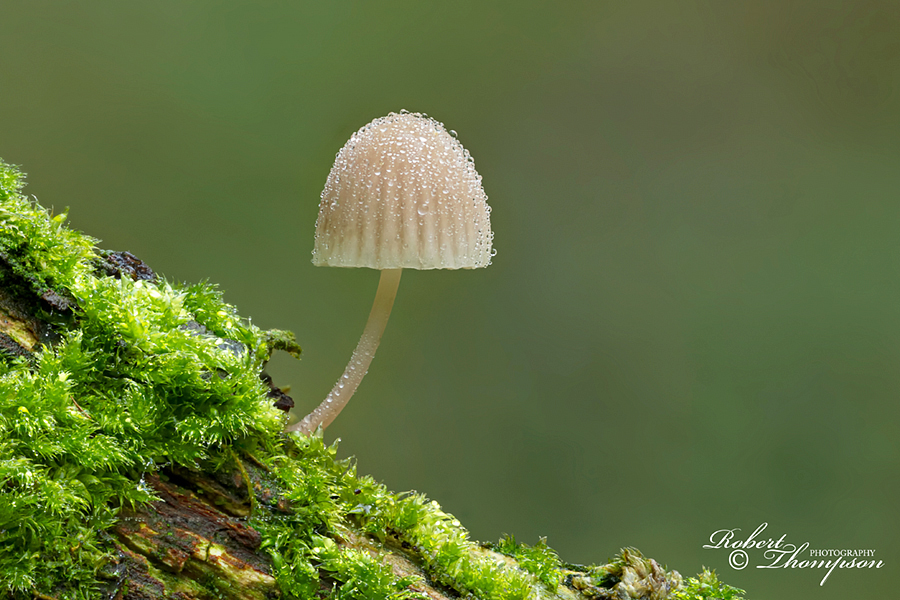
Angel’s Bonnet Mycena arcangeliana
A tiny little bonnet growing out of this thin stem in damp woodland. With the Z 9 there is no vibration to worry about and you can adopt slow shutter speeds without the fear of introducing vibration. This species was only a couple of centimeters tall. Due to its size, the image was focus stacked using the Z MC 105mm macro VR S f/2.8 and Focus Shift.
Up until the announcement of the Z 7II, mirrorless was not on my radar. I felt the technology and the availability of Z glass was not quite there yet. I was still content to continue with DSLR technology for the time being. However, using the Z 7II for a while changed my opinion quite dramatically. The ease of use and the image quality from this camera was impressive. I also found the migration to an EVF was better than I was led to believe. It became the camera I picked up routinely to shoot macro and having the advantage of focus peaking in the EVF as well as the LCD was a real game-changer for me. However, I was still using my D850 for the majority of my work as GPS is a must for me and it was a bit more complicated to use on the Z 7II. For the first time, I felt that mirrorless technology was now a serious contender to the DSLR stronghold that dominated the professional industry for years. Although the Z 7II was a much smaller camera and on appearance looked more delicate than I was used to it did perform well in all of the conditions both wet and dry I was accustomed to working in. I did adapt to it pretty quickly but I knew the pending Z 9 would be a camera that would exceed it in many ways pushing the boundaries of mirrorless technology to another level to meet the needs of an everchanging industry.
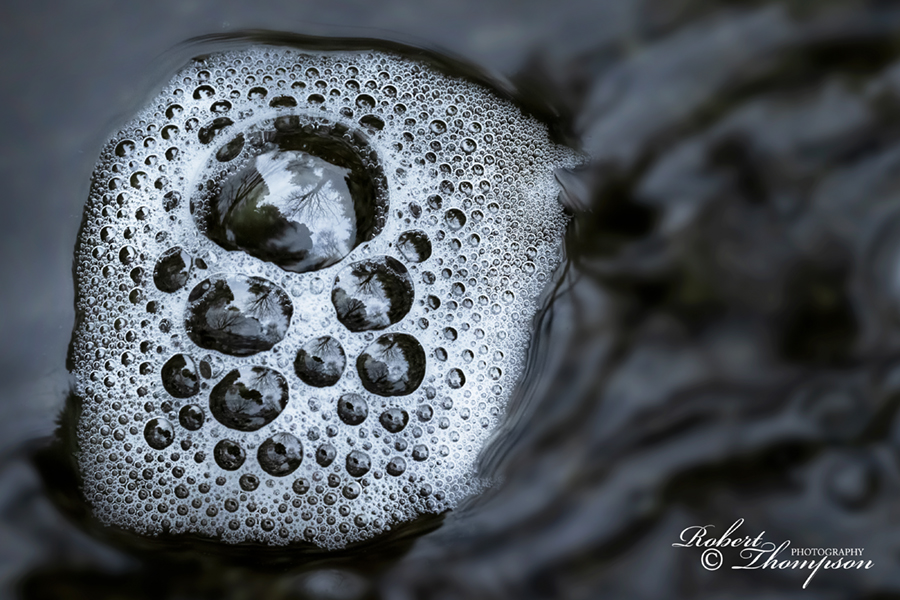
River Bubbles
I was working on a series of images for an article and was intrigued by the collection of bubbles that was continually forming in the swirl of the waterfall. All of them were fast-moving and not possible to work with a tripod. I had to hold the camera out into the water while balancing on a rock to keep it parallel with the bubbles. Using the Z 9, with the Z MC 105mm macro VR S and autofocus set to AFC and the LCD screen tilted I could follow the groups of bubbles as they moved about. The subject was only about 2 1/2 cm in size. Despite having to move the camera quickly to keep the subject in the frame I was surprised how consistent the camera was in maintaining focus in each shot.
I have been using the Z 9 for a while now and it’s everything I expected it to be and then some. It’s a camera built for speed and its autofocus capabilities have been the dominating factors in terms of advertising and reviews. However, having said that the camera is much more than speed machine. It’s also a camera designed to deliver versatility just as the D850 did back in 2017. A camera that combines high-speed performance with high-resolution output, offering the best of both worlds to those photographers that shoot across a range of photographic genres. As a natural history photographer, I find myself having to shoot a wide range of subjects where I need speed and high resolution and a camera that can adapt to each situation just as my D850 has done for the last 5 years. For me, the Z 9 is that camera, another D3 moment for me. I also like the ergonomics of the Z 9, I don’t have particularly large hands but the grip and feel of the camera is an ideal balance in my opinion. The EVF has been well thought out by Nikon and I think they have got the balance right. Some might complain about the resolution, but I can assure you that it will not dissapoint. Not even Sony’s high-resolution EVF runs at maximum output all of the time. It depends on what your shooting configuration is at the time. I also find the new GNSS (Global Navigation Satellite System) a game-changer, it’s fast, I suspect it’s on all of the time even when the camera is off, which means you are not waiting (like the GP-1) to acquire satellites each time the unit is switched on. I have waited for a long time to have it integrated into a pro camera body and finally at last Nikon has obliged. Having it integrated eliminates the GP-1 and the other Di-GPS unit I used on the D850. They also required different electronic releases which were somewhat delicate and annoying to use. The integration of the GNSS system into the Z 9 is a great benefit to photographers who need GPS, it’s more accurate and essential for me especially when shooting rare flora. I can also use the Nikon MC 30 electronic release straight into the 10-pin socket which means no more clutter or trailing wires around an external GPS unit.
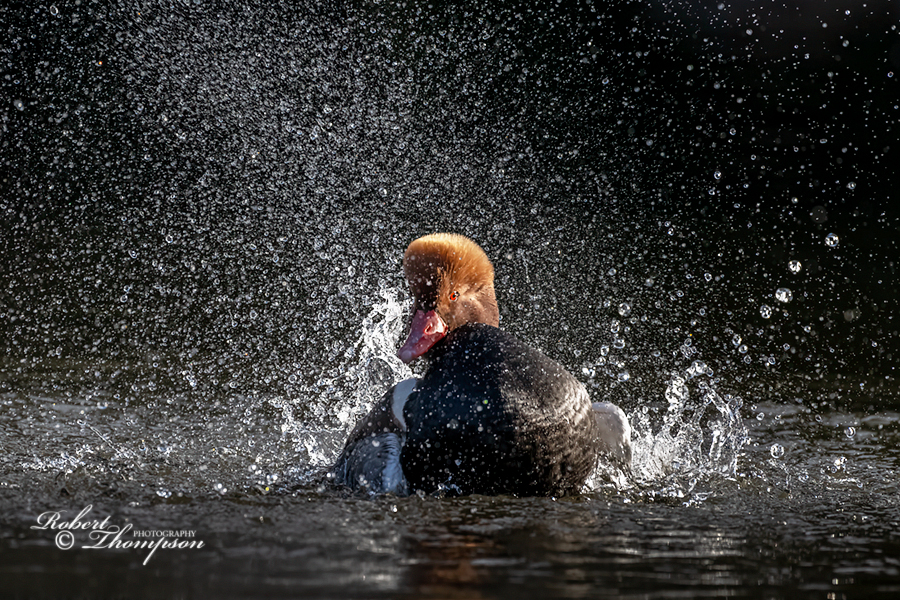
Red-crested Pochard Netta fufina
I was keen to see how autofocus would deal with challenging situations such as this. These types of images are the most demanding on any autofocus system. You have to react extremely quickly to the action. The bird is so fast at ducking and diving in and out of the water it can be challenging for any autofocus system to continually track it. It loses it when the bird dives and then has to pick it up again when the bird surfaces, this can go on for several seconds with the bird shaking and moving all over the place spraying water everywhere. The Z 9 coped pretty well in this situation occasionally dropping focus on some images but it nailed the majority of them. The ISO was 3200 to maintain a high enough shutter speed to freeze the action. Noise levels were remarkably good at this setting and I was pleased with the results
The Z 9 has an integrated vertical grip which I am used to with other pro bodies. I had to add one to the D850 as all of the other Nikon pro bodies I have owned had it! I know some photographers prefer not to have integration, but I do. What I will say is that switching from the EVF on the Z 9 to the OVF on the D850 is now a bit disheartening. I have found it difficult to go back to using the OVF having been conditioned to the Z 9’s EVF for a while now. Another advantage with the Z 9 is the various display options in both the EVF and the LCD screen which I find very useful. Another first in Nikon mirrorless technology is the addition of a protective curtain which is activated when the camera is turned off. Nikon recommends that you switch the camera off during lens changes, which automatically activates the curtain. It’s not on by default and needs to be activated in the menu. It does keep the sensor clean, and I have had little in the way of dust at all.
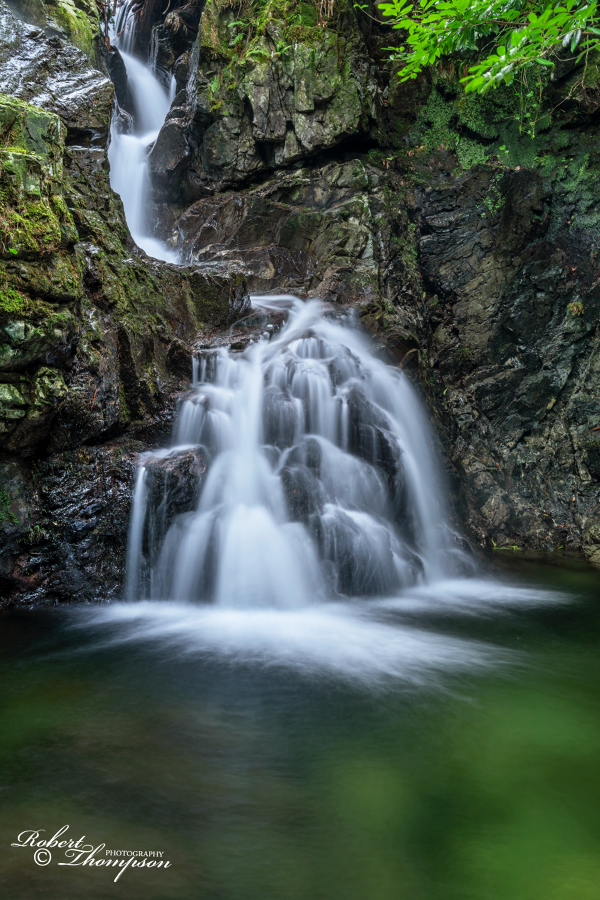
Sprinkwee Cascade River
Having a camera that has the versatility of speed and resolution is an advantage when you are shooting a wide range of subjects. The Z 9 also has an extended range of shutter speeds and photographers will find this extremely useful when shooting long exposures. This waterfall lies in a small dark enclosed rocky cleft. You have to navigate boulders and get into the river to nail the shot. The dynamic range on the Z 9 is excellent with good highlight and shadow recovery making it possible to shoot scenes such as this in a single exposure.
The Z 9 will allow me to explore other ways of capturing images of subjects that were not easily achievable with the D850. We are of course in the middle of winter and subject material on the macro front is naturally reduced, but spring is just around the corner. My D850 now joins some of my other bodies and sits quietly on the shelf in my office. In the meantime, I will continue to build on the Z system. I have also been using some of my F glass with Z lenses on the Z 9. While I have been more than happy with the F glass performance the Z glass just has the edge. For many photographers like myself, it will be a transition from F to Z glass. Nikon has ensured that both technologies work perfectly together and with the FTZ adapter, I have had no issues at all.
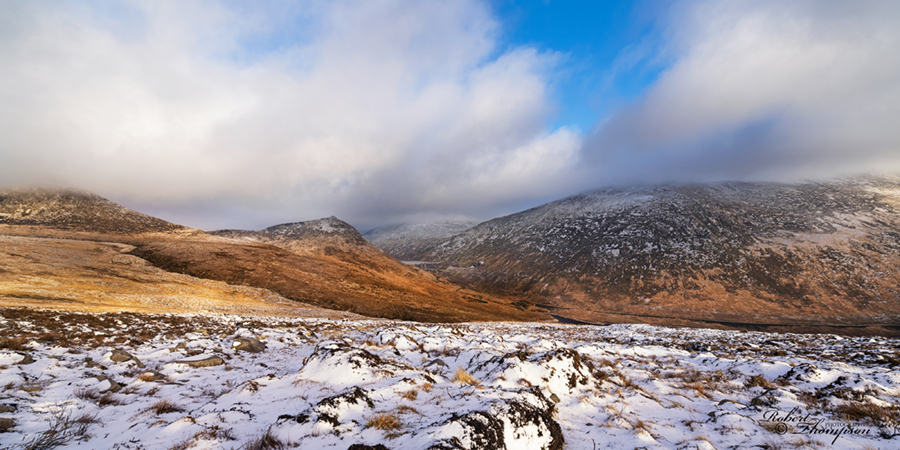
Mourne Mountains
The first snow in the mountains this winter. Not much to brag about but using the 14-24 in combination with the Z 9 gives an excellent result. I have no problem using my F glass on the Z 9 until such times as I convert all of my main lenses over to Z glass.
For some of my high magnification macro, I use the Novoflex BALPRO-1 bellows system. The beauty about this is I can use the Z MC 105mm macro in combination with the bellows for magnifications greater than 1:1. The setup works remarkably well, Novoflex makes a Retro Reverse Adapter which allows full automation between camera and lens. If you don’t have the Z MC 105mm macro then reversing the 24-70mm zoom on the bellows system produces excellent results. Mirrorless technology opens up many other possibilities. More on this at a later date!
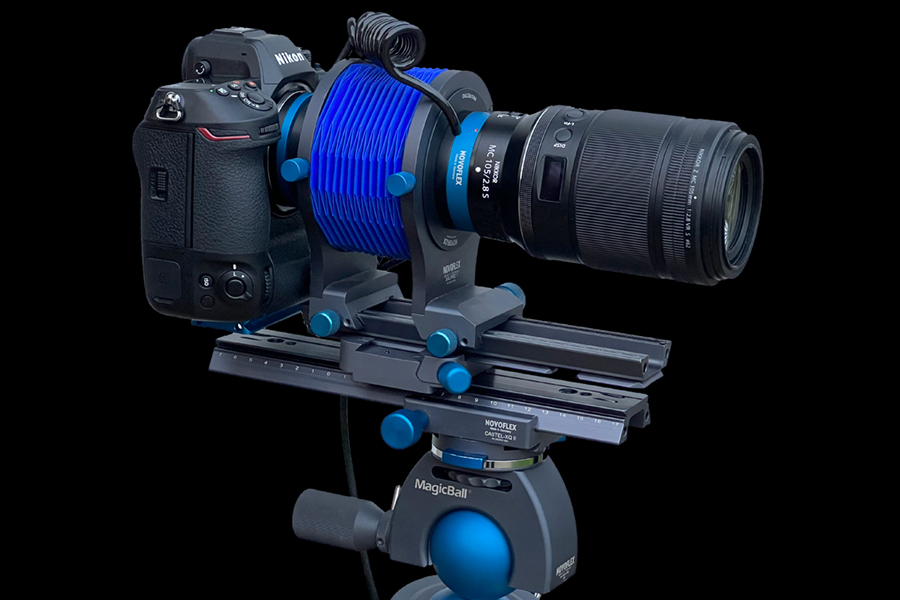
Nikon Z9 BALPRO 1 Setup
One of my current setups for shooting macro beyond 1:1. The combination of the Z MC 105mm macro VR S and the Novoflex BALPRO-1 bellows with the Retro Reverse Adapter ensures complete automation between camera and lens. Magnifications of 3:1 are possible with this setup. The camera assembly is supported on the Castel XQ focusing rail and the MagicBall head.
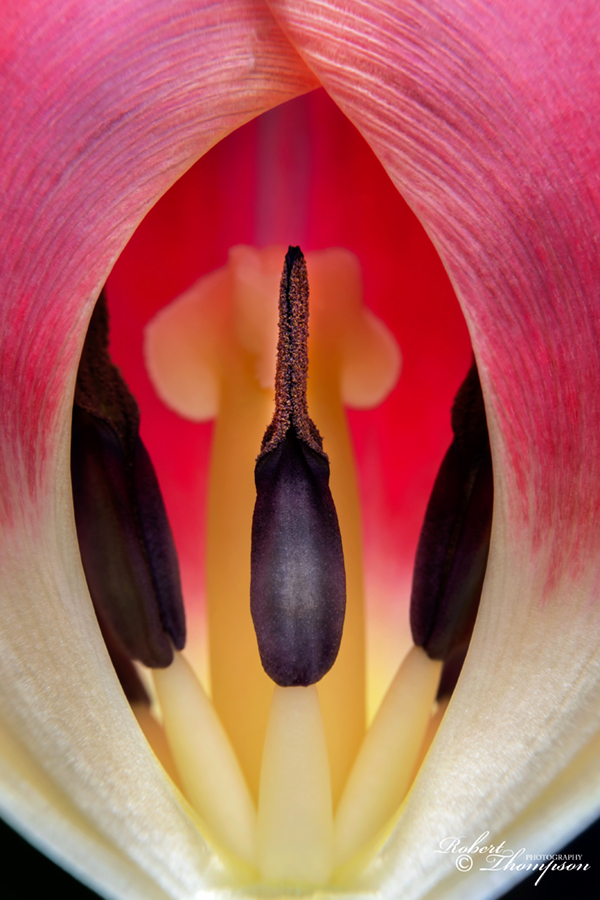
Dwarf Tulipa Species
I carefully exposed the leading stamen of this very small tulip flower to show the structure inside the flower housing. The image was focus stacked from 40 images to produce the final composite photo.
The Z 9 is now my default camera for all of my work. Nikon has made the transition for photographers from DSLR technology to mirrorless pretty straightforward. Having been used to shooting with DSLRs for many years adapting to mirrorless with the Z 9 has been easy. One thing I can say for sure is that my migration to mirrorless is now a reality and I have no regrets whatsoever. The future is mirrorless and this ground-breaking technology will allow me to explore new techniques and push the boundaries even further.

